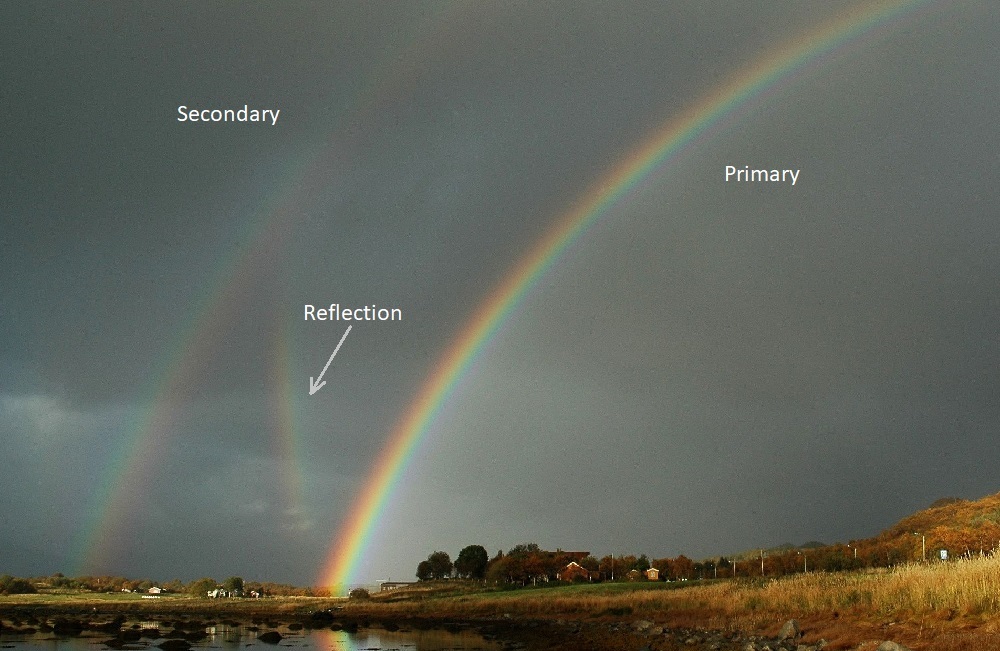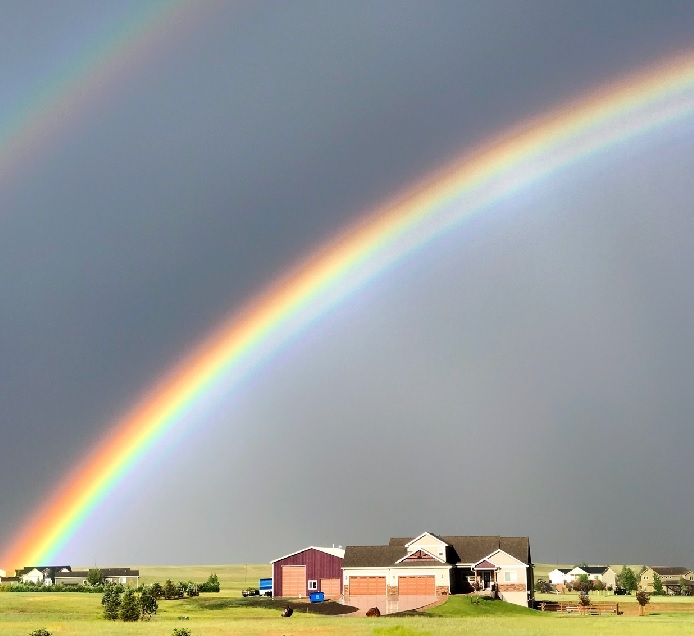Reflection and Split Rainbows
Important update: These pages have moved to their own domain at https://rainbowspec.observer, where their information, organization, and graphics have been significantly improved! This page is replaced by my new reflection rainbow page and my new split rainbow page.
These may be refered to as "double rainbows" like secondary rainbows often are, but while secondary rainbows are relatively common, these are much rarer.
Reflection Rainbows
 cropped and annotated version of this photo
cropped and annotated version of this photo
These are not the reflection of rainbows in water, but rainbows created by the reflection of light from a body of water.
 diagram by AtOpt
diagram by AtOpt
Sunlight hits a still body of water (or flat wet land like wet sand), reflects off of the surface, and then enters the raindrops, forming another rainbow.
The center of the reflection rainbow is above the antisolar point (the center of the regular primary rainbow). The rainbow and the reflected rainbow intersect at the horizon. Thus, as the sun sets and the antisolar point gets closer to the horizon, the primary rainbow and the reflection rainbow become closer together.
The source of water is typically behind the viewer (much like the sun is behind the viewer), but it can also be in front of the viewer.
Split Rainbows
 photo by Jan Curtis
photo by Jan Curtis
Notice how the rainbow starts to split further up the arc, creating white bands where the two rainbows overlap but not perfectly. Splitting in a primary rainbow is refered to as a twinned rainbow if it is split two ways, a multisplit rainbow if it is split more.
Split rainbows are very rare, so rare that researchers don't yet have enough evidence to conclude how they are formed. A commonly accepted theory is that they are formed by different shaped raindrops. In a twinned rainbow the lower is formed by large raindrops slightly flattened by air resistance, the upper formed by raindrops small enough to remain spherical. These drops could be from the same shower, or from different locations (as long as they are within the viewers rainbow cone).
The rainbow is influenced by the shape of the drop, thus the outer rainbow formed by the small spherical drops is a perfect circle, where as the inner rainbow formed by the distorted drops is a slightly flattened circle (wider than it is tall).
 read about this photo here
read about this photo here
Here is a multisplit rainbow. The bottom rainbow can be explained by flattened drops, but the cause of the faint rainbow above the primary is debatable. One hypothesis is that it is caused be elongated raindrops, but elongated drops are not as stable as flattened or normal drops, making this explanation unlikely.
Note that the secondary rainbow is not affected by splitting, which is typical of split rainbows.